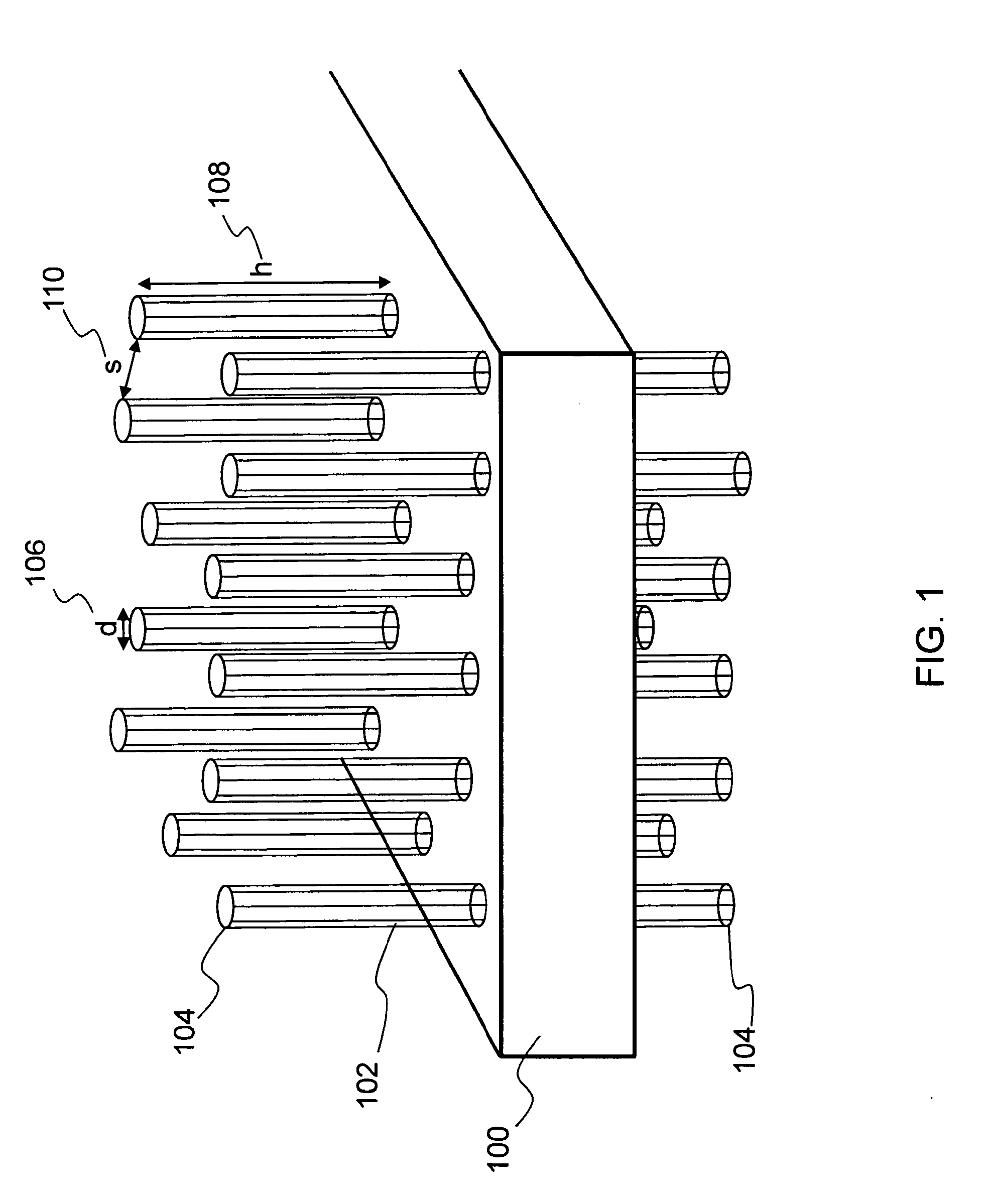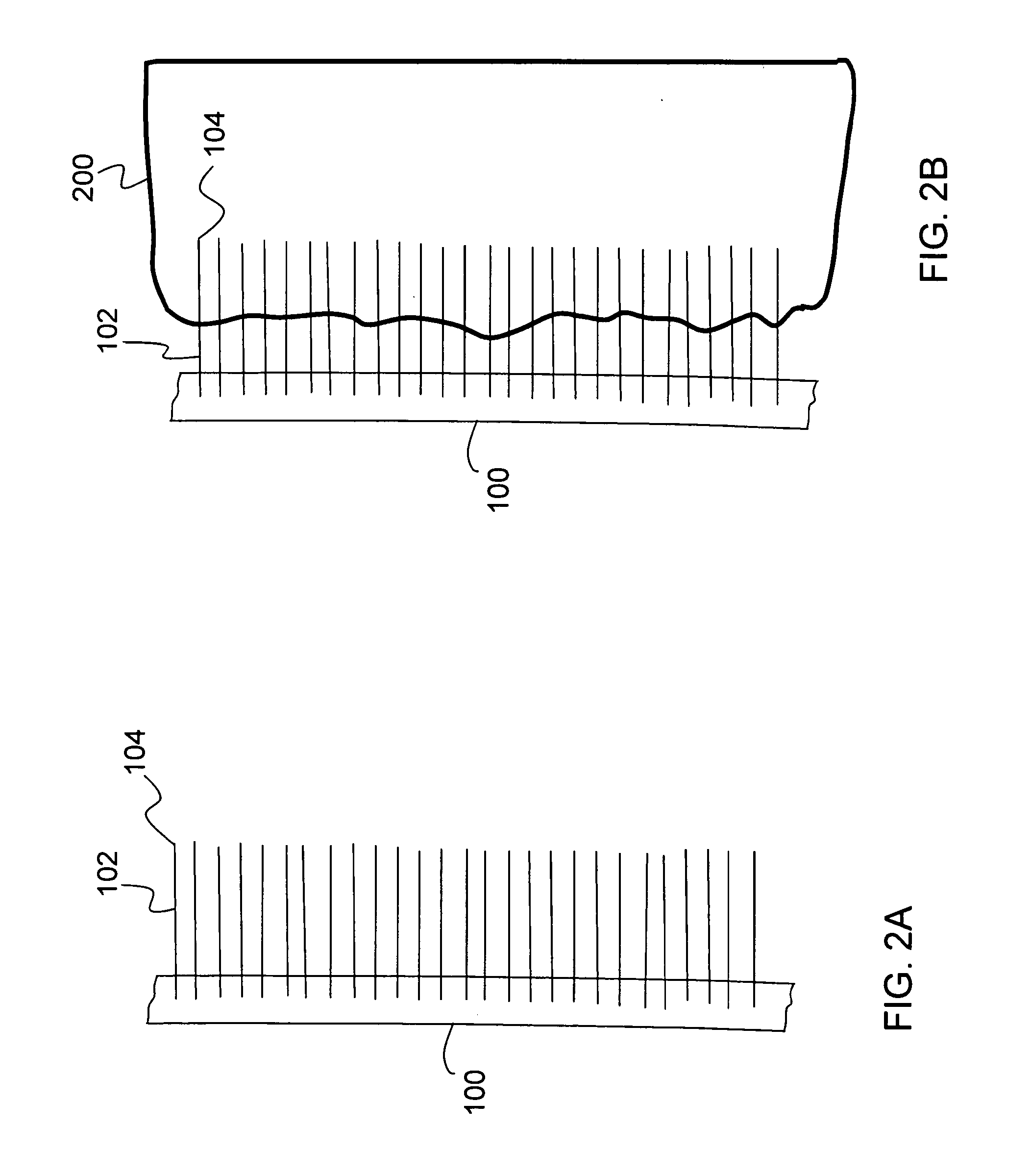Drug Delivery and Substance Transfer Facilitated by Nano-Enhanced Device Having Aligned Carbon Nanotubes Protruding from Device Surface
a carbon nanotube and nano-enhanced technology, which is applied in the direction of prosthesis, treatment, application, etc., can solve the problems of affecting the implanting process, and affecting the effect of the implanting process
- Summary
- Abstract
- Description
- Claims
- Application Information
AI Technical Summary
Benefits of technology
Problems solved by technology
Method used
Image
Examples
Embodiment Construction
[0045]The present invention relates to a nanostructure-enhanced drug delivery and blood monitoring device and, more particularly, to a device with aligned carbon nanotubes protruding from the device surface for facilitating drug or fluid transfer between the device and body tissue. The following description is presented to enable one of ordinary skill in the art to make and use the invention and to incorporate it in the context of particular applications. Various modifications, as well as a variety of uses in different applications will be readily apparent to those skilled in the art, and the general principles defined herein may be applied to a wide range of embodiments. Thus, the present invention is not intended to be limited to the embodiments presented, but is to be accorded the widest scope consistent with the principles and novel features disclosed herein.
[0046]In the following detailed description, numerous specific details are set forth in order to provide a more thorough u...
PUM
| Property | Measurement | Unit |
|---|---|---|
| diameter | aaaaa | aaaaa |
| diameter | aaaaa | aaaaa |
| temperature | aaaaa | aaaaa |
Abstract
Description
Claims
Application Information
 Login to view more
Login to view more - R&D Engineer
- R&D Manager
- IP Professional
- Industry Leading Data Capabilities
- Powerful AI technology
- Patent DNA Extraction
Browse by: Latest US Patents, China's latest patents, Technical Efficacy Thesaurus, Application Domain, Technology Topic.
© 2024 PatSnap. All rights reserved.Legal|Privacy policy|Modern Slavery Act Transparency Statement|Sitemap



